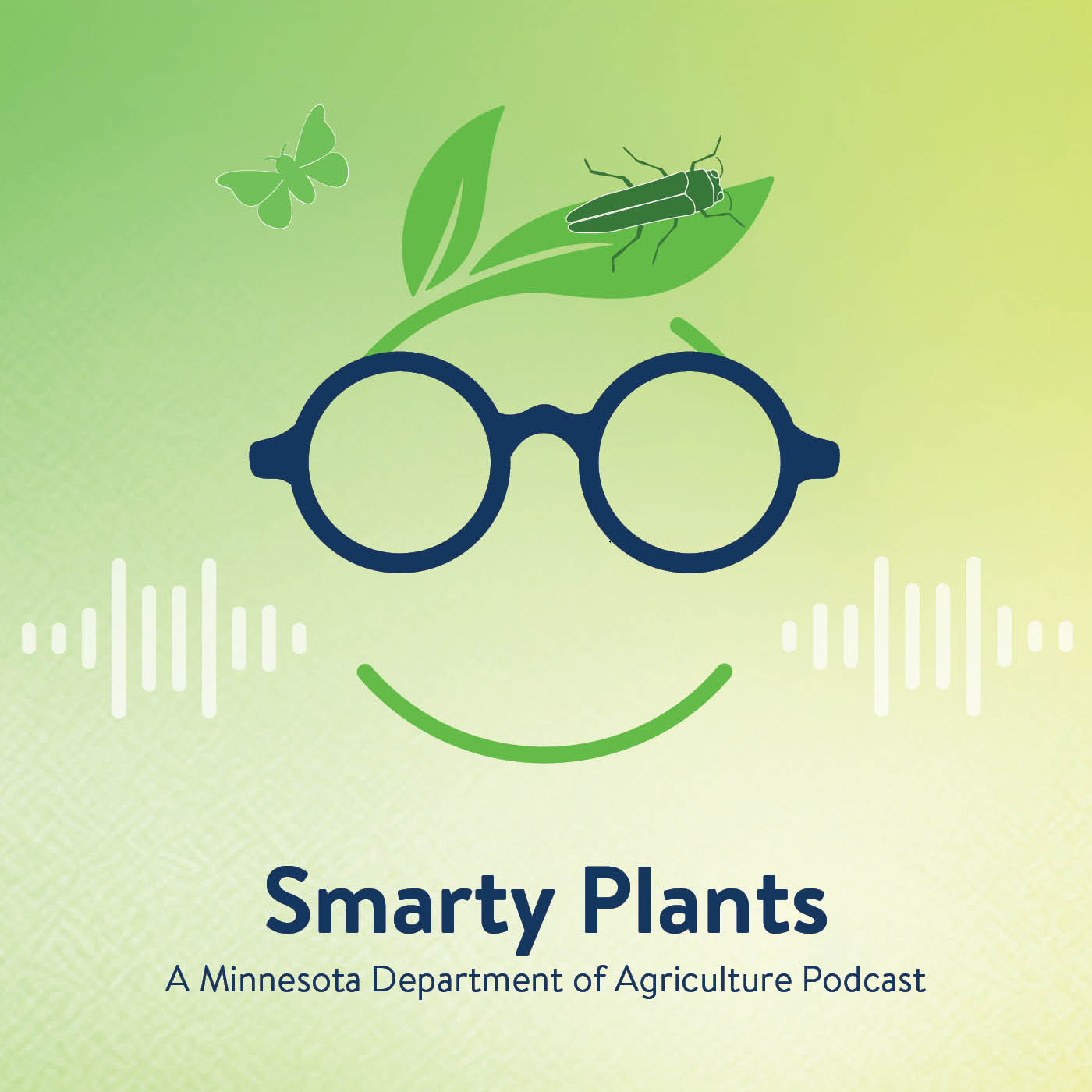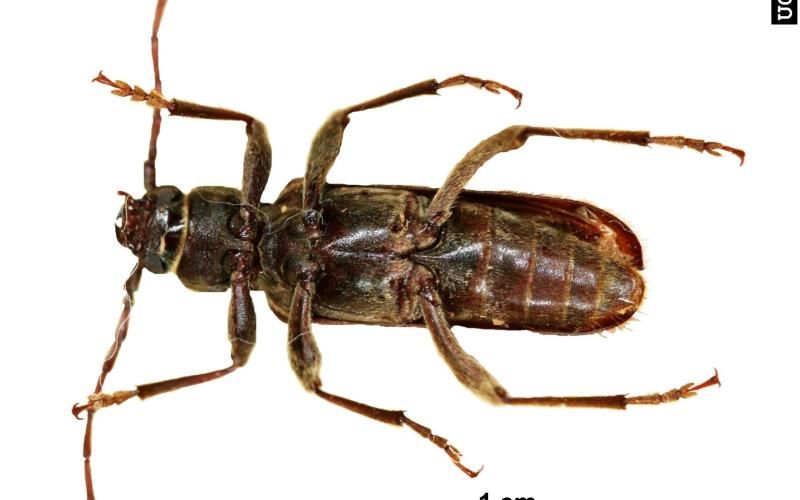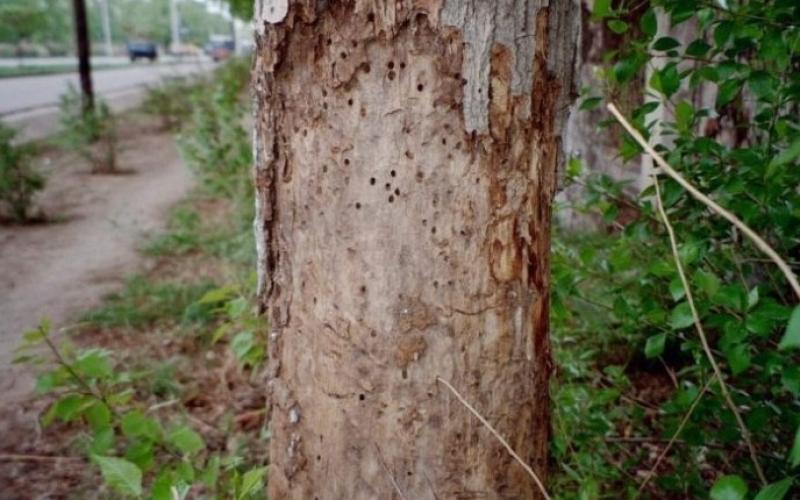Scientific name: Trichoferus campestris Faldermann (syn. Hesperophanes campestris)
Native range: Asia and portions of Eastern Europe
At Risk
Preferred hosts of the velvet longhorned beetle (VLB) are reported to be apple (Malus) and mulberry (Morus). This beetle has also been recovered from maple (Acer) in Canada and is attacking living cherry and peach trees in Utah (Prunus). The infested furniture imported from China is made from a type of walnut (Juglans). The host range appears to be broad and not enough is known about this insect to know what hosts are at greatest risk in Minnesota. Since this insect seems to have a particular ability to complete development under dry wood conditions the range of potential hosts may include dry cut wood with bark as well as recently cut logs and living trees.
Distribution
The velvet longhorned beetle has been detected in Minnesota via trap surveys for exotic bark beetles and wood borers conducted by the U.S. Department of Agriculture (USDA) and the Minnesota Department of Agriculture (MDA). Since 2010, discoveries have been made in Carver, Dakota, Dodge, Goodhue, Hennepin, Olmsted, Ramsey, Rice, Scott, Steele, Washington, and Winona Counties. The insect is now considered established Minnesota.
In other parts of the U.S., VLB is currently considered established in Utah and Illinois. This beetle has also been recovered from traps and found through other circumstances in a number of other states and Canadian Provinces. However, it is not clear if those recoveries were new introductions or established populations.
Biology
In its native range, larvae overwinter in wood and pupate in spring. Adults emerge from wood and are active from June to August. After mating, females lay eggs on the bark of trees. Larvae hatch from the eggs and tunnel under the bark and eventually into the wood. A single generation takes at least one year and could take two or more to complete.
This insect seems to be particularly tolerant of tunneling in dry wood and this has been demonstrated from inspecting infested furniture. There is some indication that the life cycle of the insect may take longer to complete when infesting dry wood products. In some pieces of infested furniture, insect activity was not detected until 18 months after the furniture was purchased. There are also some indications from studies on this insect in Asia that it may be capable of infesting dry wood products such as furniture or other material provided that the bark remains. This is not typical of insects in this family which are mainly restricted to infesting dying trees or recently cut logs.
Identification
Identification of this species is difficult due to a multitude of related species that may be found in the same types of trees. Larval life stages will not be identifiable to species. Identification of adult beetles will require an entomologist to distinguish them from related species. The adult beetle is about ½- ¾ inches long.
Look-Alikes
Many species of longhorned beetles have a similar appearance.
Pest Status
There are no regulations related to VLB.
In 2016 the MDA discovered that rustic log furniture manufactured in China and sold in Minnesota was infested with the VLB. The MDA along with the USDA and other State Departments of Agriculture worked with the furniture seller to recover and destroy infested furniture.
What Can Be Done?
The ultimate pest potential of this insect in Minnesota and North America is yet to be determined. In most locations where beetles have been found it has not been possible to document a local infestation or pest impact. The exception has been Utah, where a significant presence of Trichoferus campestris has been documented and pest impact is being evaluated. Contact the MDA via email at reportapest@state.mn.us if you suspect the presence of VLB in Minnesota.
Smarty Plants Podcast
 Discover Smarty Plants, the Minnesota Department of Agriculture's podcast that digs into the fascinating world of invasive species. Join expert guests as they share insights and solutions to protect our environment and agricultural resources. Visit Smarty Plants and start listening today.
Discover Smarty Plants, the Minnesota Department of Agriculture's podcast that digs into the fascinating world of invasive species. Join expert guests as they share insights and solutions to protect our environment and agricultural resources. Visit Smarty Plants and start listening today.




